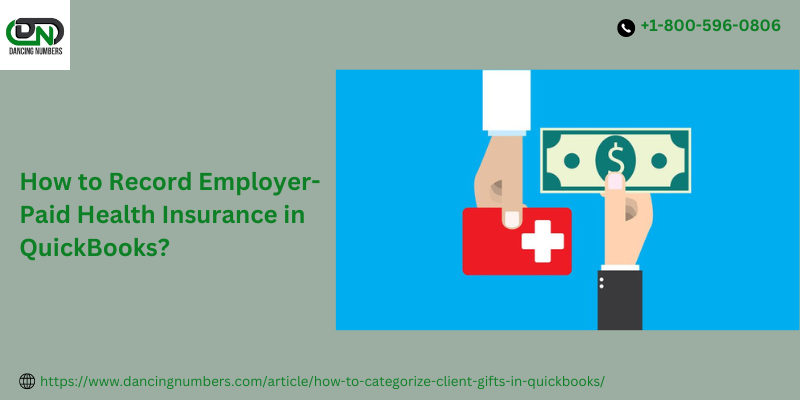How to Record Employer Paid Health Insurance in QuickBooks?
Effectively managing and recording employer paid health insurance is crucial for accurate financial reporting and tax compliance. Whether you’re using QuickBooks Online or QuickBooks Desktop, knowing how to properly record employer paid health insurance in QuickBooks can save you time and ensure your bookkeeping is precise. In this guide, we’ll explore the steps for recording employer paid health insurance in QuickBooks Desktop and Online.
Importance of Recording Employer Paid Health Insurance in QuickBooks
Proper recording of employer paid health insurance in QuickBooks is essential for several reasons:
- Financial Accuracy: Ensures that all employee benefit expenses are accurately reflected in your financial records.
- Tax Compliance: Helps in preparing accurate tax returns and adhering to tax regulations.
- Budget Management: Provides a clear view of your employee benefit costs, aiding in effective financial planning.
Steps for Recording Employer Paid Health Insurance in QuickBooks
1. Set Up a Health Insurance Expense Account
To start, you need to set up an expense account for health insurance in QuickBooks:
- Access the Chart of Accounts: From the QuickBooks dashboard, navigate to the Chart of Accounts.
- Create a New Account: Click on “New” and select “Expense” as the account type.
- Name the Account: Label it “Health Insurance” or a similar name.
- Save the Account: Click “Save and Close” to complete the setup.
2. Record Insurance Premium Payments
To record the employer payment paid health insurance:
- Go to Write Checks or Expenses: Depending on your version, go to the Banking or Expenses menu and select the appropriate option.
- Enter Payment Details: Input the payee’s information and select the “Health Insurance” expense account you set up.
- Enter the Amount: Enter the amount of the insurance premium.
- Save the Payment: Click “Save and Close” to record the transaction.
3. Recording of Employer Paid Health Insurance in QuickBooks Desktop
For those using QuickBooks Desktop, the process is similar but with some version-specific details:
- Navigate to Write Checks: Go to the Banking menu and choose “Write Checks.”
- Fill in Payment Details: Select the Health Insurance expense account, input the payee’s name, and enter the amount.
- Complete the Entry: Save the check or expense to record the transaction.
4. Allocate Insurance Costs to Employees (Optional)
If you need to track costs by employee or department:
- Create Sub-Accounts: Set up sub-accounts under your main Health Insurance account for each employee or department.
- Allocate Costs: When recording payments, allocate the expense to the appropriate sub-account.
5. Review and Reconcile
Ensure the accuracy of your records by regularly reviewing and reconciling:
- Generate Reports: Use QuickBooks to create reports on your health insurance expenses.
- Reconcile Statements: Compare your QuickBooks records with insurance provider statements for accuracy.
6. Prepare for Tax Season
Proper records will make tax preparation easier:
- Generate Tax Reports: Create reports in QuickBooks that include health insurance expenses.
- Seek Professional Advice: Consult with a tax professional to address any specific questions.
Conclusion!
Mastering how to record employer paid health insurance in QuickBooks ensures your financial records are accurate and compliant. By following these steps, whether in QuickBooks Online or through the recording of employer paid health insurance in QuickBooks Desktop, you’ll maintain organized records and simplify your accounting processes. Accurate bookkeeping for health insurance is not only a best practice but also essential for smooth financial operations and tax compliance.

